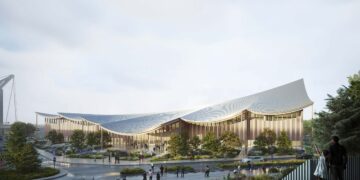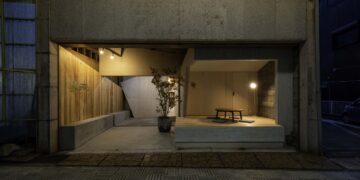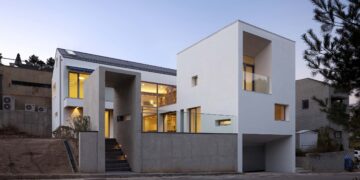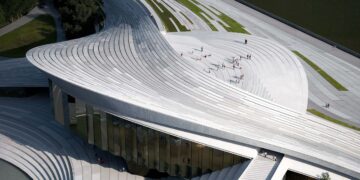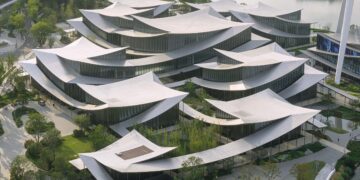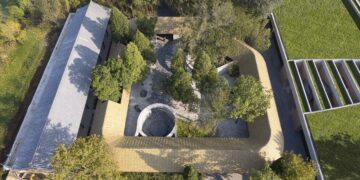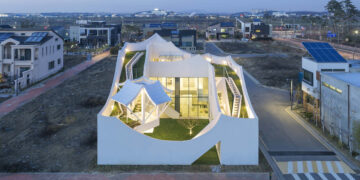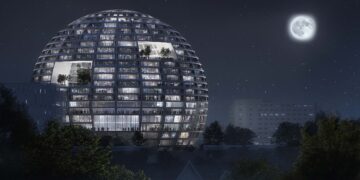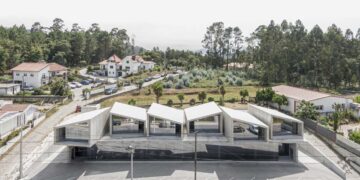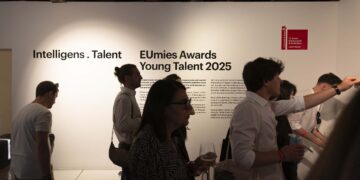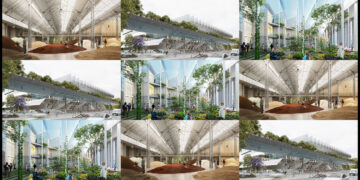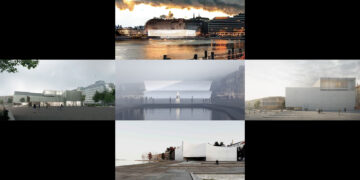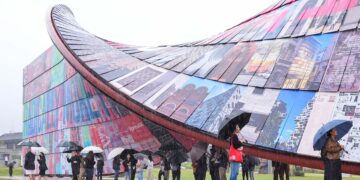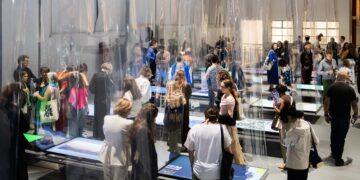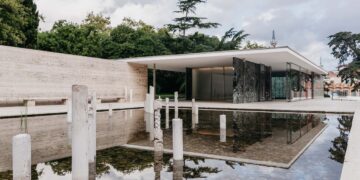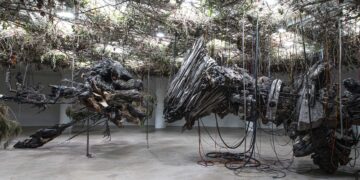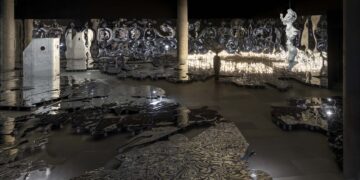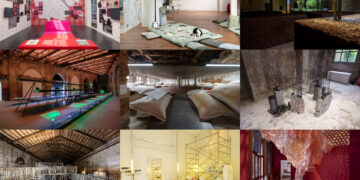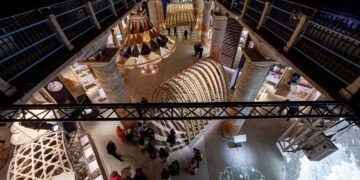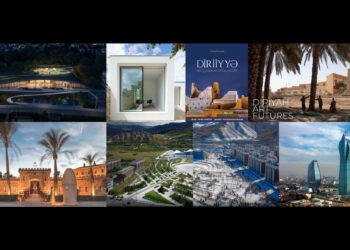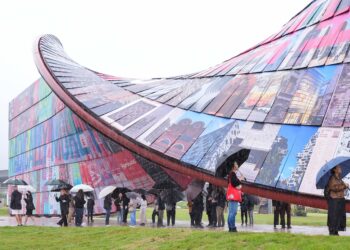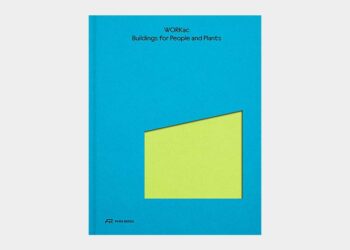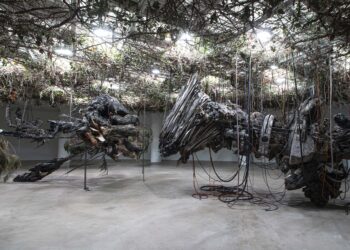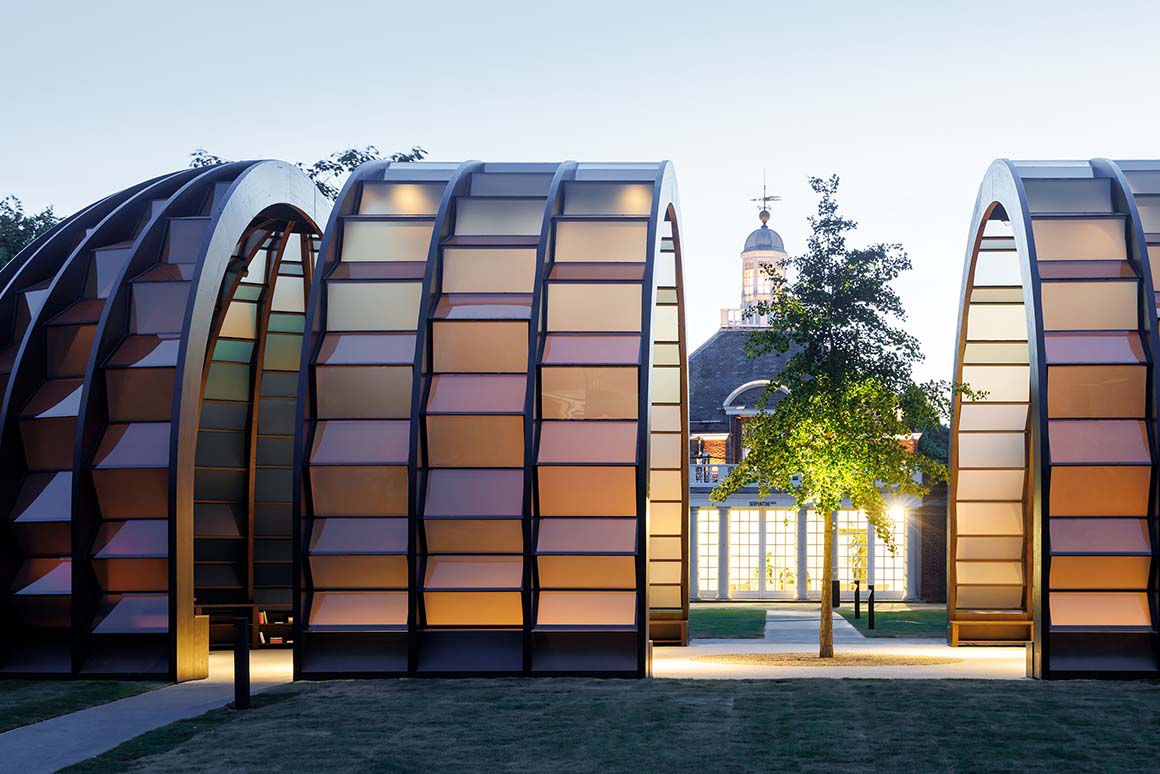
The 2025 Serpentine Pavilion has officially opened. This year, marking the 25th anniversary, the pavilion is A Capsule in Time by Bangladeshi architect Marina Tabassum. Commemorating this milestone, A Capsule in Time honors the architectural philosophy of architect Zaha Hadid, whose work inaugurated the first Serpentine Pavilion in 2000. Hadid’s ethos, “There should be no end to experimentation,” forms the foundation of this pavilion, fully realized in its architectural expression.
Tabassum’s pavilion, rooted in a contemporary architectural language that intertwines place, climate, context, culture, and history, resonates with Serpentine South. It reflects the enduring significance of the pavilion while contemplating its ephemeral nature.

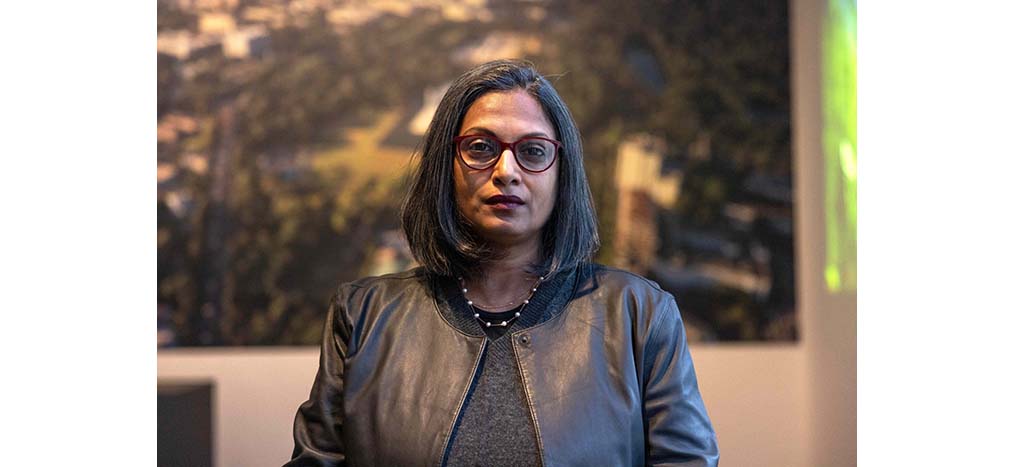
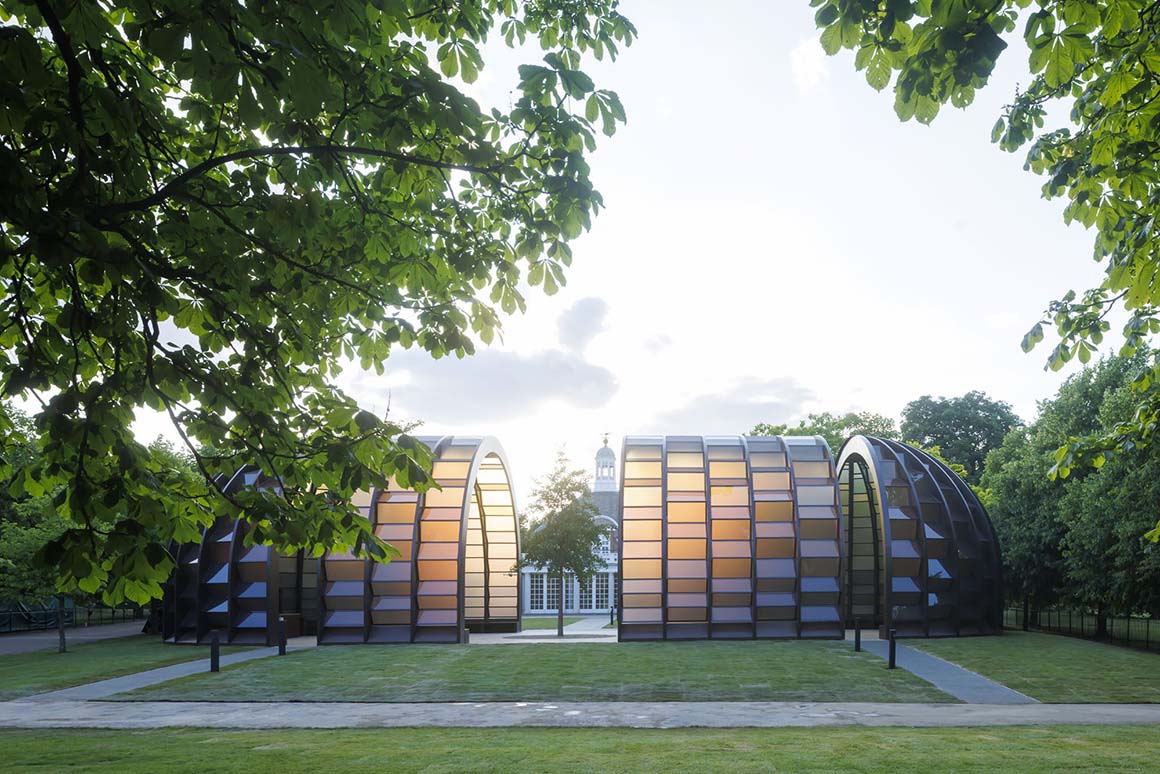
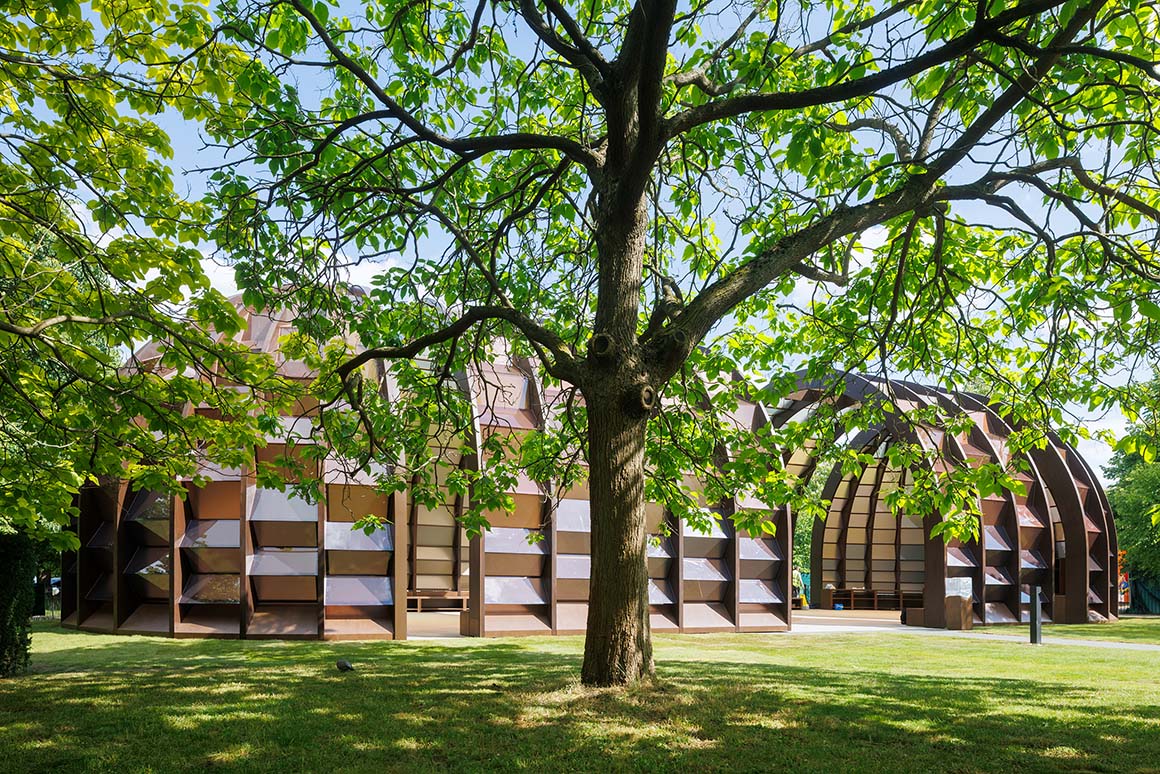
The structure, composed of four interconnected wooden capsules, stretches along the north-south axis of the Serpentine South forecourt. With its arched, translucent façade, the pavilion filters and scatters light, inspired by the interplay of sunlight through green foliage in a garden canopy. The architectural design incorporates geometry and materials enhanced by light and shadow, creating a sensory and dynamic spatial experience. The capsules also feature a functional, movable element, allowing the configuration of the space to transform.
As with previous Serpentine Pavilions, the design balances the interplay between interior and exterior, material textures, light and shadow, height, and volume. Surrounding the pavilion is a ginkgo tree, whose leaves will transition from vibrant green in June to luminous gold by late October. Known for its climate resilience and resistance to pests and diseases, the ginkgo will be replanted throughout Kensington Gardens after the event’s conclusion, enriching the park’s arboreal diversity.
The pavilion invites visitors to gather, converse, and spend time within its versatile spaces. Marina Tabassum and her firm, Marina Tabassum Architects(MTA), curated a collection of books highlighting Bangladeshi culture, literature, poetry, and ecology, displayed on built-in shelves within the structure. After its time at the Serpentine, the pavilion will transform into an open-access library, ensuring its continued impact as a space for learning and reflection.
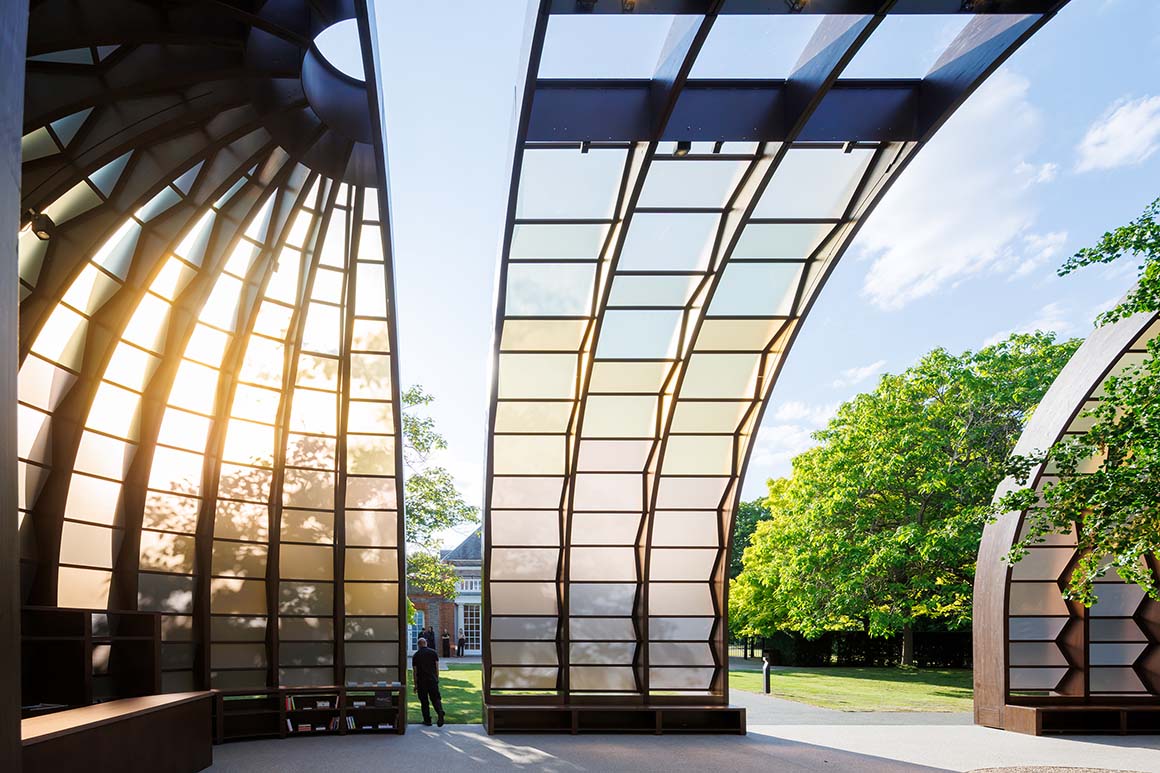

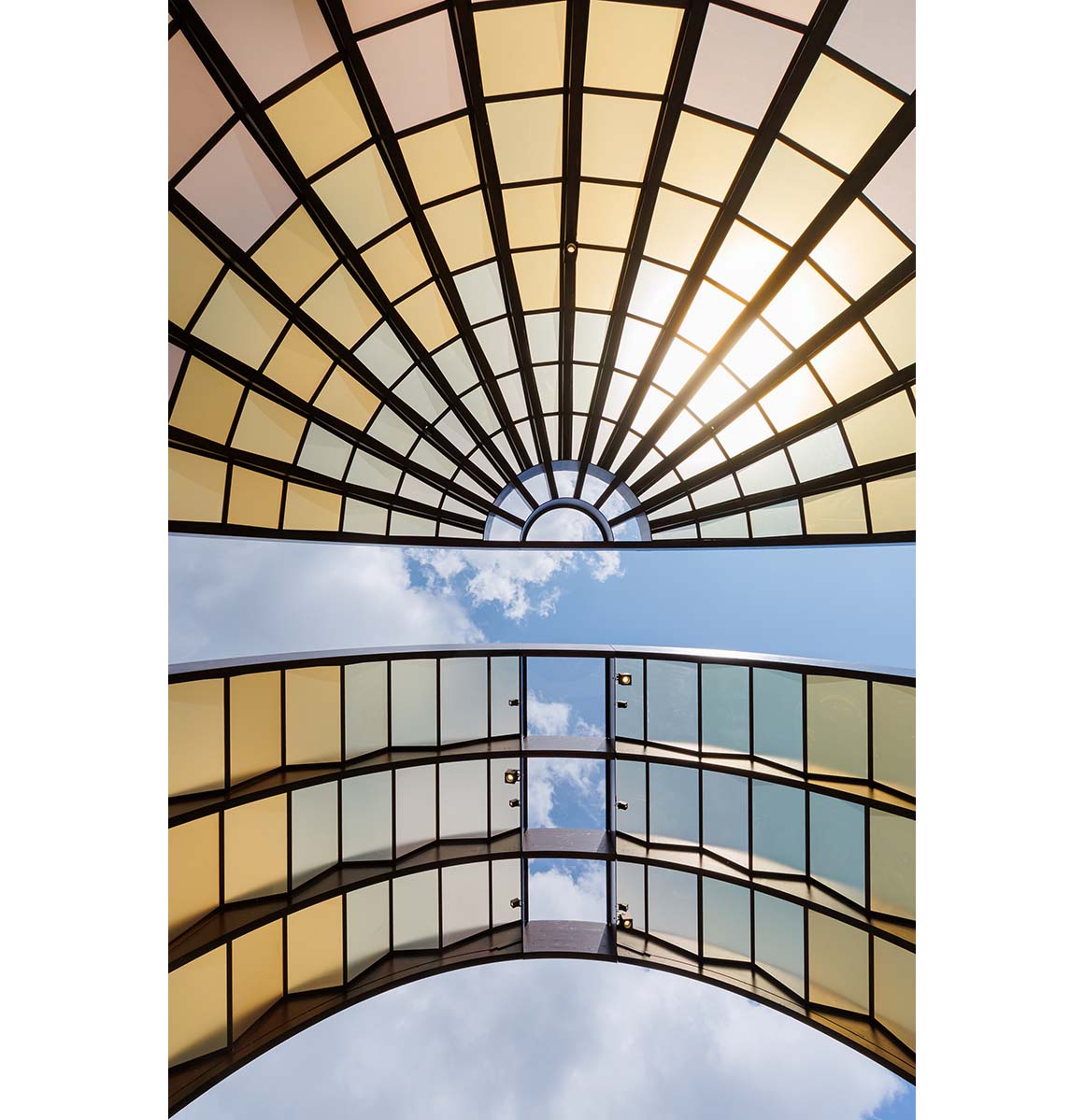
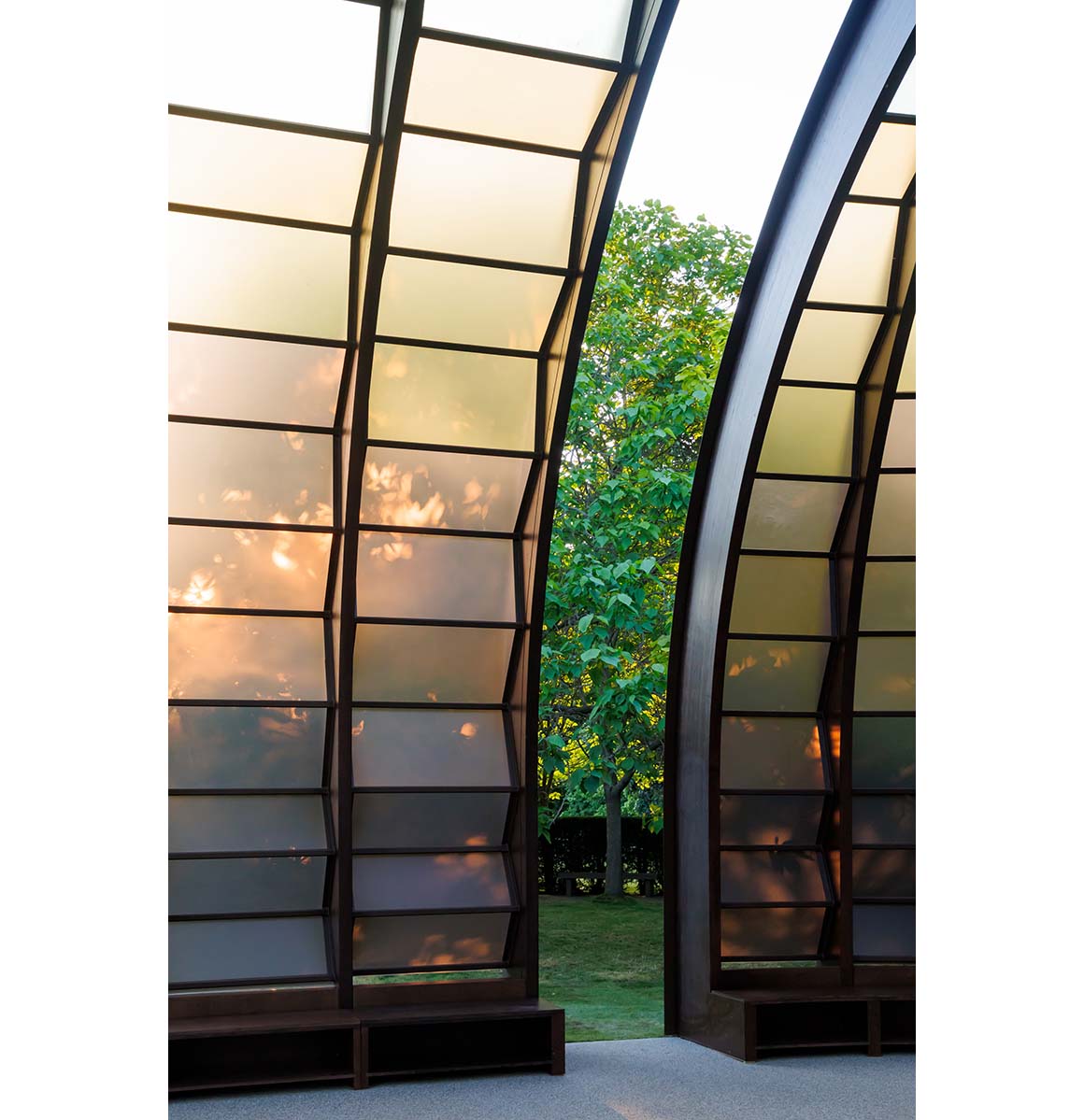
This year’s Serpentine Pavilion also serves as a platform for diverse interdisciplinary programming, including the *Park Nights* series, which offers live encounters across music, film, theater, dance, literature, philosophy, fashion, and technology.
The pavilion was selected by Serpentine CEO Bettina Korek, Artistic Director Hans Ulrich Obrist, Director of Construction and Special Projects Julie Burnell, Exhibitions Curator Chris Bayley, and Curator at Large for Architecture and Site-specific Projects Natalia Grabowska, alongside Assistant Exhibitions Curator Alexa Chow. Advisors Sou Fujimoto and David Glover also contributed to the selection process.


